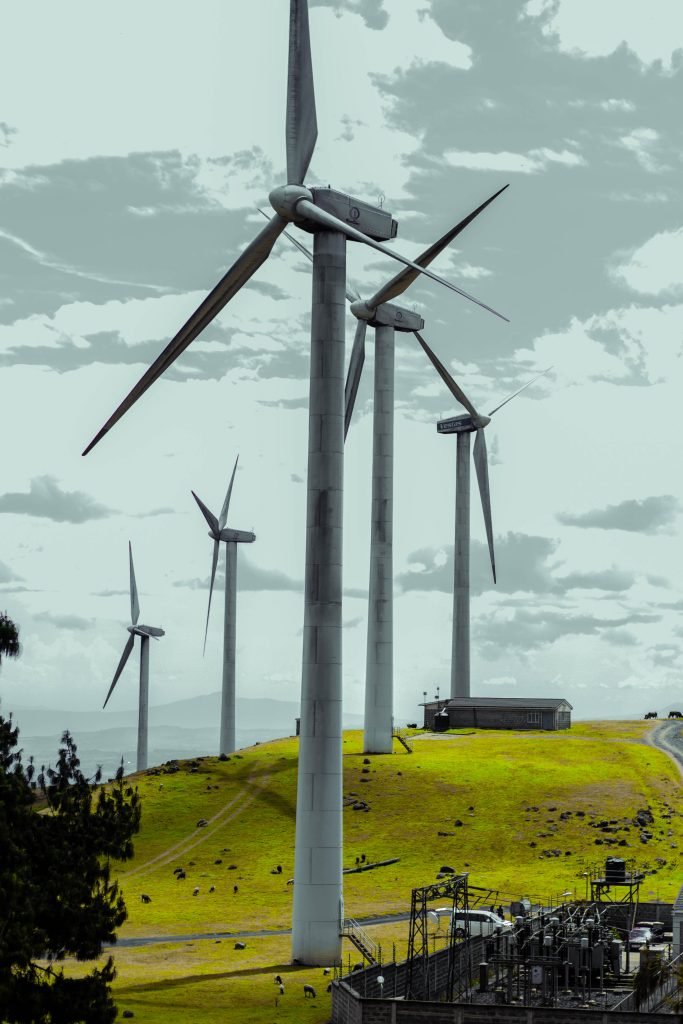Wind and solar reached a record 12% of global electricity in 2022, up from 10% in 2021, according to a report by Ember, energy think tankEmber. The report forecasts that from 2023 wind and solar will push the world into a new era of falling fossil generation, and therefore falling power sector emissions.
“In this decisive decade for the climate, it is the beginning of the end of the fossil age,” said the lead author, Małgorzata Wiatros-Motyka. “We are entering the clean power era.”
The fourth annual Global Electricity Review from energy think tank Ember presents electricity data from 2022 across 78 countries, representing 93% of global electricity demand. The open data and analysis paint a bigger picture of the global electricity transition in 2022.
Solar was the fastest-growing source of electricity for the 18th year in a row, rising by 24% year-on-year and adding enough electricity to power all of South Africa. Wind generation increased by 17% in 2022, enough to power almost all of the UK.
The data reveals that over sixty countries now generate more than 10% of their electricity from wind and solar. Together all clean electricity sources (renewables and nuclear) reached 39% of global electricity, a new record high. Despite this progress, coal power remained the single largest source of electricity worldwide, producing 36% of global electricity in 2022.
The growth in wind and solar generation in 2022 met an impressive 80% of the rise in global electricity demand. In spite of the global gas crisis and fears of a return to coal, it was that rise in wind and solar that limited the increase in coal generation (+1.1%). Gas power
generation fell very slightly (-0.2%) in 2022. Overall, that still meant that power sector emissions increased by 1.3% in 2022, reaching an all-time high.
However, the report forecasts that last year may be the ‘peak’ of electricity emissions and the final year of fossil power growth, with clean power meeting all demand growth this year. As a result, there would be a small fall in fossil generation (-0.3%) in 2023, with larger falls in subsequent years as wind and solar deployment accelerates.
According to modelling by the International Energy Agency, the electricity sector needs to move from being the highest emitting sector to being the first sector to reach net zero by 2040 in order to achieve economy-wide net zero by 2050. This would mean wind and solar reaching 41% of global electricity by 2030, compared to 12% in 2022.
Ember’s senior electricity analyst, Małgorzata Wiatros-Motyka, said that stage is set for wind and solar to achieve a meteoric rise to the top. To her, clean electricity will reshape the global economy, from transport to industry and beyond.
“A new era of falling fossil emissions means the coal power phasedown will happen, and the end of gas power growth is now within sight. Change is coming fast. However, it all depends on the actions taken now by governments, businesses and citizens to put the world on a pathway to clean power by 2040,” she said.

Damilola Ogunbiyi, CEO and Special Representative of the UN Secretary-General for Sustainable Energy for All, and Co-Chair of UN-Energy, said that global progress, while encouraging, doesn’t reveal the growing disparity in renewable energy adoption which is tipped disproportionately in favour of developed countries and emerging economies in Asia. This makes it difficult for developing countries which are always left behind and locked into high carbon futures.
“Coal power remained the single largest source of electricity worldwide, producing 36% of global electricity in 2022, which means that the power sector remains off-track in meeting net zero targets globally by mid-century, the deployment of wind and solar needs to be massively and urgently accelerated,” said Ogunbiyi.
The way forward lies in pacing up renewable energy and making it a “global public good”. Robust policies on easing finance and improving global access to components and raw materials coupled with geographical diversification of supply chain will address some of the challenges. In addition, continuous capacity building, shifting energy subsidies from fossil fuels to renewable energy, and solar mini-grids would make for faster movement towards universal energy access.
According to Dr Ajay Mathur, director general, International Solar Alliance, the cumulative global solar PV capacity has reached ~942 GW in the last decade, while the global wind capacity reached ~853 GW. He points out that countries like China, the USA, India, and Japan have made some of the largest contributions to the global solar PV capacity.
“In the last decade, cost for solar and wind has declined drastically (82% and 34% respectively), however, cost for coal fired energy remained similar while cost of nuclear fired energy increased by 61%. While the global RE share is increasing but to achieve net zero by 2030, the RE generation must cater at least 60 % of total generation from renewables,” Mathur says.


